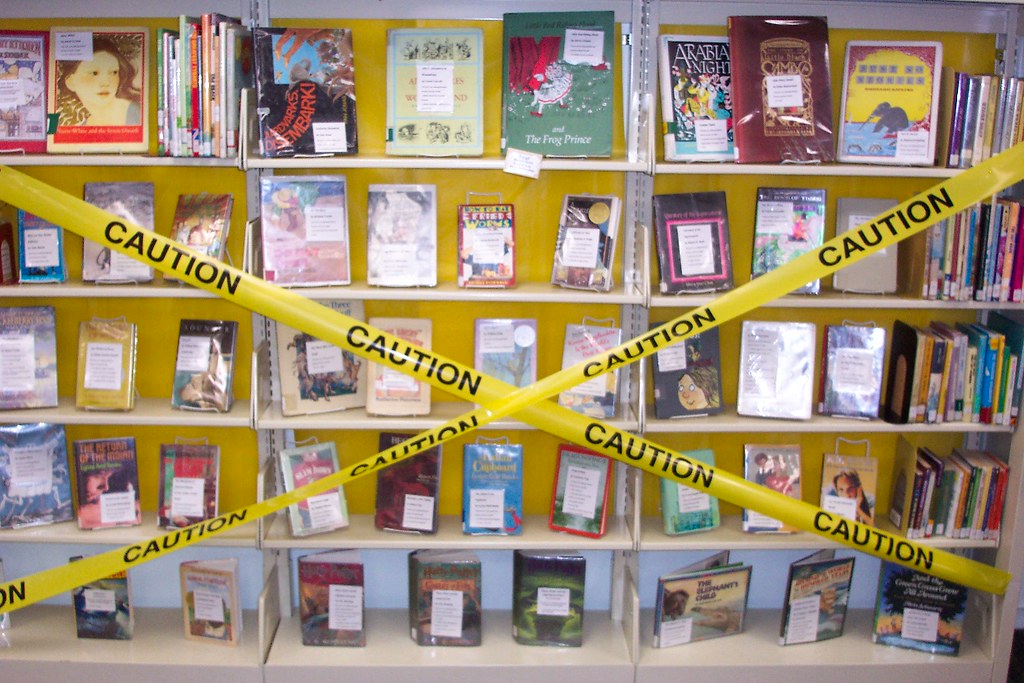Investigating the US banned books list
My friend once told me something that I think perfectly sums up the discussion surrounding the US banned books list. It’s easier to control information than it is to control people.
Book banning is nothing new, having recurred throughout American history (for example the McCarthy era and the early 1980s). However, in recent years, we have seen an unprecedented rise in book bans. PEN America, an index that provides a list of books banned in the 23/24 school year, recorded 10,046 instances of book bans in 29 states and 220 public school districts. But why is this happening now more than ever?
Of the most commonly banned books in the 23/24 school year, 44% featured people and characters of colour and 39% featured LGBTQ+ people and characters.
It isn’t hard to see that these efforts to ban books have increased alongside state legislation restricting school content on topics like race, sex, and gender. Of the most commonly banned books in the 23/24 school year, 44% featured people and characters of colour and 39% featured LGBTQIA+ people and characters.
Again, this is nothing new in the US, but it is the tactics and politicisation that are changing. “The politicisation of the topic is what’s different than what I’ve seen in the past,” said Britten Follett, the chief executive of content at Follett School Solutions, one of the country’s largest providers of books to K-12 schools. “It’s being driven by legislation, it’s being driven by politicians aligning with one side or the other. And in the end, the librarian, teacher or educator is getting caught in the middle.”
Laurie Halse Anderson, author of young adult books that have come under fire from the US book ban, discusses how crucial it is to access these kinds of books: “By attacking these books, by attacking the authors, by attacking the subject matter, what they are doing is removing the possibility for conversation […] You are laying the groundwork for increasing bullying, disrespect, violence and attacks.”
The most targeted books are more often than not the ones that are most desperately needed. It is the books that have long fought for a place on the shelf that are books which are valuable to read.
Every year the American Library Association compiles a list of the top 10 most frequently challenged books based on reports from the field and media coverage. Gender Queer: A Memoir by Maia Kobabe has received a total of 106 challenges for its LGBTQIA+ content, claimed to be sexually explicit. All Boys Aren’t Blue by George M. Johnson has had a total of 82 challenges for the exact same reasons. This Book is Gay by Juno Dawson, Let’s Talk About It: The Teen’s Guide to Sex, Relationships, and Being Human by Erika Moen and Matthew Nolan, do I need to continue? I think it’s clear what is at play here.
“Books can change the outcomes for students themselves when they see people who look like them represented,” says an Associate Professor of Economics and Education. “What people see affects who they become, and what they believe about themselves and also what they believe about others […] Not having equitable representation robs people of seeing the full wealth of the future that we all can inhabit.”
The American Library Association reported 1247 attempts to censor library books and resources in 2023
So, what can you do? Whether you live in the US or not, this is a problem that affects the entire world. “Book bans diminish the quality of education students have access to and restrict their exposure to important perspectives,” says TC’s Sonya Douglass, Professor of Education Leadership. “It’s about what we teach young people about our country, what we determine to be truth, and what we believe should be included in the curriculum they’re receiving. There’s a lot at stake here.”
Unite Against Book Bans is a national initiative to empower readers everywhere to fight against censorship. Fortunately, we are not alone in our opinions. 71% of US voters oppose efforts to remove books from public libraries and 67% say the same for school libraries. The American Library Association reported 1247 attempts to censor library books and resources in 2023, primarily driven by efforts of pressure groups to censor multiple titles at a time in public and school libraries.
Take action. Send a letter to Congress. Send a letter to your state lawmakers to voice your opposition to book bans. Speak up about the right to read. You can also film yourself reading a banned book and submit it to ALA’s Banned Books Week YouTube Channel. Guidelines can be found here.
Going back to what my friend said at the beginning of this article, banning books in the US is just another attempt to control its increasingly diverse population. Do we want to become a society where we are fed and only believe one type of information? In a world that already overlooks marginalised groups, we need to fight for their voices to be heard, and their diverse lives and experiences to be represented in the books on our shelves.

Comments (2)
They are Restricted not outright Banned. Using the word Banned makes it more draconian and evil. ALL of the restricted books are available by other sources.
You must have a very intelligent friend 🙂